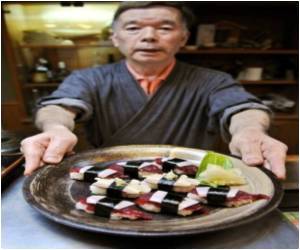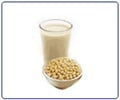Following Japanese dietary guidelines reduces risks of death, particularly those caused due to cardiovascular and cerebrovascular diseases.

- The Japanese food guide - "The Spinning Top" lowers the risk of death caused by the major chronic diseases.
- Consume a well-balanced diet with staple food including cereals, vegetables, fruits, milk products, fish and meat.
- Balance the calories you consume by doing some physical activities.
- Monitor your diet by keeping track of your daily food intake.
Studies based on western population have remarked that high-quality diet was associated with lower risks of death caused by the major chronic diseases. But such evidence based on Asian population had been missing. This study has now revealed that close adherence to dietary guidelines of Japan reduces the risks of death from all causes including those caused by cerebrovascular and cardiovascular diseases.
One of the main emphasis of the study was that a balanced diet comprising of grains, fruits, vegetables, fish, meat, eggs, dairy products, soy products and confectionaries could increase life expectancy by lowering the risk of cardiovascular diseases.
"The Spinning Top" - Japanese Dietary Guidelines
The Japanese government had designed the Japanese food guide - "The Spinning Top" to illustrate the quantity and balance of food items in the Japanese diet. It was launched in 2000, but got published only in 2005 and now, a team of Japanese researchers, led by Kayo Kurotani have sought the association between adherence to the Japanese food guide and total and cause-specific mortality in their population.The Japanese food guide was developed by the Japanese government with the aim of promoting improved dietary patterns. It was created as a tool for food and nutrition education to help people practice healthy eating habits. The spinning top guide was designed in such a way that it resembles the renowned toy of Japanese tradition. It is a rotating cone shaped structure which is top down and has layers of food groups that depict various dishes.
The recommended daily servings determine the order of the food groups.The top layer contained grain-based dishes like bread, rice, pasta and noodles followed by vegetable-based dishes like soups, salads and boiled vegetables. Beneath is the layer for eggs, fish and meat dishes and what follows is the bottom most layer containing milk and fruit. There’s a person running on top of the rotating spinning top which represents the significance of regular physical activity for good health. In addition to the emphasis on diet and exercise, the guidelines also recommend drinking plenty of water/tea and moderate intake of confectionary, beverages and snacks.
The assessment of diet quality has been found to be of use in finding out the effect of diet on risks of death. The study attempts at illustrating the quantity and balance of food in the daily diet of Japanese people. In the year 2009, Oba & colleagues came up with a scoring system to measure the adherence to the dietary guidelines based on consumption of dishes made of grains, fruits, vegetables, meat, fish and milk along with the sum of daily energy generated from intake of snacks and alcoholic beverages.
Higher the Diet Quality Scores, Lower the Risk of Deaths
Higher scores on food guide adherence were inversely associated with mortality due to cardiovascular diseases and cerebrovascular diseases, but there was no such inverse association inferred with deaths due to cancer.The association with lower risk of cardiovascular disease mortality was explained by consumption of fruits and vegetables, and with that of cerebrovascular disease was partly explained by the consumption of fish and meat. The findings also made a suggestion that high amounts of fruits and vegetables and adequate amount of meat and fish can significantly reduce mortality.
The findings were the same as that of the concept of Chinese food pagoda score being associated with lower rates of mortality from chronic diseases.
References:
- Kayo Kurotani, Shamima Akter, Ikuko Kashino, Atsushi Goto, Tetsuya Mizoue, Mitsuhiko Noda, Shizuka Sasazuki, Norie Sawada, Shoichiro Tsugane. Qualityof diet and mortality among Japanese men and women: Japan Public Health Center based prospective study. BMJ, 2016; i1209 DOI: 10.1136/bmj.i1209
- http://www.fao.org/nutrition/education/food-based-dietary-guidelines/regions/countries/japan/en/















